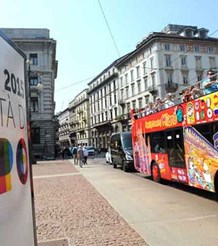
Michelangelo's Historic 16th-Century Villa in Italy for Sale at 7.5m EUR
According to a press release by PR Rocket, the villa where the great Florentine artist Michelangelo Buonarroti lived, one of the most celebrated properties in Italy is still on the market. News of the listing was first published by The Daily Mail in August this year. The asking price for the culturally and historically significant home is a very reasonable €7.5 million.
The luxurious former residence of one of the greatest artists in the history features 1,200m² of space and has eight bedrooms and seven full bathrooms with scenic views of the Tuscany hillside. The grand estate stands on six acres of land and has three separate multi-story buildings plus an ancient tower believed to be erected in the 11th century. Grounds surrounding the villa are dedicated to Chianti vineyards, lemon groves, and olive orchards, as well as the original olive oil mill.
The house has retained much of its old grandeur, as the current owner has significantly worked to restore the villa from its rustic architecture down to the minutest detail in the brick work and wooden ceilings. He also has the original documents and deeds to the house.
Michelangelo bought the home in 1549, three decades after completing his work on the Sistine Chapel ceiling between 1508 and 1512. The estate belonged to the Buonarroti Family for over 300 years until 1857. The home is furnished with several of the original accents such as the wooden-beamed ceiling.
Michelangelo was born in 1475. At a young age, he already exhibited great promise as an artist, prompting his banker father to apprentice him with celebrated painter Domenico Ghirlandaio. From him, Michelangelo mastered the art of fresco painting. Soon, he became a student of sculpture under the tutelage of Lorenzo the Magnificent. At the age of 16, Michelangelo completed sculpting the "Battle of the Centaurs" and "Madonna Seated on a Step".
Michelangelo's most famous works, however, are the paintings in the Sistine Chapel and his sculptures "David" and "Pieta".
There is significant investment in Italy's historic buildings and entire villages are being renovated in attempts to restore the country's former architectural grandeur beyond the famous landmarks tourists flock to see.
Some medieval properties in rural villages are being offered for restoration from as little as €1 to incentivise investment and there is considerable interest in the many fascinating opportunities in Italy's real estate market.






